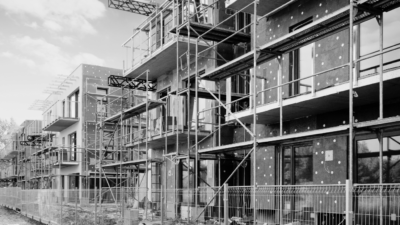We are getting used to superlatives to describe the housing market.
Even as the rest of the economy comes out of its Rip Van Winkle lockdown slumber, the housing market can rightly say “been there, done that”.
It is a year since housing came out of its first and only lockdown and the upturn shows no sign of subsiding.
Thus, the Nationwide reported a 2.1% rise in prices in April, the biggest monthly increase for 17 years, within an annual increase of 7.1%.
When Rishi Sunak extended the stamp duty cut in his March budget he provided rocket boosters to the recovery.
The government may be scratching its head about the broader levelling up agenda but the pattern of the house price recovery, weakest in London and strongest in some “left behind” regions has had a strong flavour of it.
A change is, however, occurring.
In the early stages of this pandemic housing recovery, both demand and supply picked up at the same time.
After years in which the market was characterised by cautious buyers and reluctant sellers, buyers began to throw caution to the wind and sellers overcame some of their reluctance.
Now things are changing again.
The headline on the latest RICS (Royal Institution of Chartered Surveyors) residential market survey says it all: “Buyer demand holds strong as dwindling supply of homes pushes prices up.”
The detail explains it. A net balance 44% of surveyors reported a rise in new buyer enquiries. And, for the first time this year, buyer demand was up in every region. Any doubts, it seems, were assuaged by the stamp duty extension.
Supply, on the other hand, is not booming.
Agents responding to the RICS survey cited concern over a lack of new listings, which are not enough to meet buyer demand.
In contrast to the positive balance for new buyer enquiries, its equivalent for sales instructions was -4%, down from +21% a month earlier.
Stocks of unsold homes at agents are well down on where they were at the end of last year.
Strong demand and weak supply can only mean one thing, sharply rising prices.
What home.co.uk calls a “synthetic boom” shows no sign of subsiding.
As it put it, on releasing its asking price index, which showed a rise of 1.1% last month, and 8.6% over the latest 12 months:
“Pumped up by £11.8 billion of fresh mortgage lending in March alone, the market is on fire.”
“Surging demand is evident everywhere except London, with seemingly unlimited credit feeding an insatiable appetite for the little stock available.”
“Across the UK, the number of properties entering the market is currently 16% less than it was two years ago, and in many regions the supply shortfalls are much more severe.”
Some think the supply shortfall, caused by uncertainties earlier this year, will ease, including Knight Frank, the estate agents.
“We expect more properties to come onto the market and a greater balance between supply and demand to return, reducing upwards pressure on prices,” said Tom Bill, its head of UK residential research.
“We forecast 5% growth for UK property prices in 2021, with current activity levels normalising as the post-pandemic landscape materialises towards the end of the year.”
It is not just in the sales market that there is a shortage of property.
While the London rental market remains in the deep doldrums, in other areas demand is outstripping supply.
This comes through in the RICS survey, which said:
“Near term rental growth expectations also rose sharply, returning a net balance of +55% in April, compared to a reading of +15% over the previous quarter.”
“Over the next twelve months, respondents envisage rents rising by 3% on average across the UK.”
“Although near term expectations remain marginally negative across London, the twelve month view on rents moved slightly into positive territory for the first time since early 2020.”
It was also evident in home.co.uk’s report, which reported “a drought” in rental properties outside the capital, with a 37% drop in properties available to rent over the past 24 months, and annualised rent increases of 11.6% in the East of England and 12.2% in the South West.
It is an ill wind…





















Comments